Introduction
The world of laser technology is dynamic and ever-evolving, continually presenting new avenues for exploration and discovery. One such exploration is the role of chromium-doped yttrium aluminum garnet (Cr4+:YAG) in passively Q-switched lasers. This article aims to delve into the properties, utility, and significance of Cr4+:YAG in this context, providing a comprehensive understanding of its impact in this field.
Understanding Cr4+:YAG
To grasp the role of Cr YAG in passively Q-switched lasers, one must first understand the nature of this material. Cr4+:YAG is a synthetic crystal, characterized by its chromium doping into a yttrium aluminum garnet matrix. It boasts high thermal conductivity, significant mechanical strength, and excellent optical properties. These qualities make it a highly desirable choice for various laser applications.
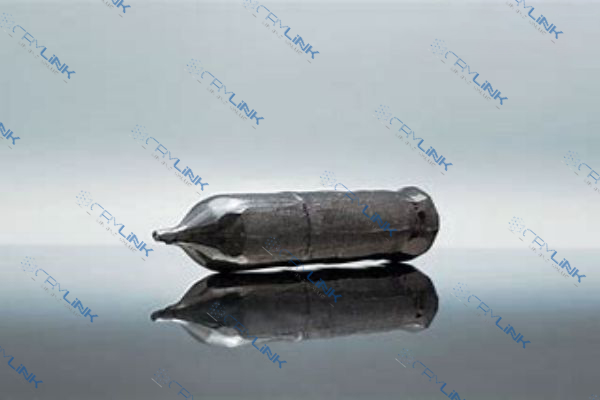
The Science Behind Passively Q-switched Lasers
Q-switching, a technique used in laser physics, enables the generation of light pulses with extremely high peak power, much higher than would be produced by the same laser if it were operating in a continuous wave (constant output) mode. In passive Q-switching, the Q-switch is a saturable absorber, a material that initially absorbs light and then quickly releases it once its absorption capacity is saturated. This is where Cr YAG comes into the picture.
Cr4+:YAG: The Ideal Saturable Absorber
When it comes to laser technology, the choice of a saturable absorber is of paramount importance. This component dictates the laser’s performance, versatility, and durability. In this regard, Cr YAG has emerged as the preferred choice for a saturable absorber, outclassing alternatives due to its unique properties and significant advantages.
Understanding Saturable Absorbers
Before delving into the qualities of Cr4+:YAG, it is essential to understand what saturable absorbers are and the role they play in laser systems. Saturable absorbers are materials that can absorb and subsequently release light when their absorption capacity is saturated. They are used in Q-switched lasers, particularly passive Q-switched lasers, to produce short, high-intensity light pulses.
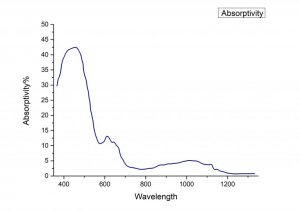
The Significance of a Broad Absorption Band
One of the standout properties of Cr4+:YAG is its broad absorption band. This feature is crucial for a saturable absorber as it allows the absorber to operate efficiently across a range of wavelengths. A broad absorption band enables the laser system to be more versatile, capable of being tuned to different wavelengths for various applications. It also contributes to the system’s efficiency, as more of the incident light can be absorbed and converted into laser light.
High Damage Threshold: A Key to Durability
Lasers are high-energy systems. The components of these systems, especially the saturable absorbers, are subjected to intense light pulses. Therefore, these components need to withstand these conditions without damage. Cr4+:YAG is known for its high damage threshold, which means it can withstand high-intensity light pulses without degradation. This feature enhances the lifespan of the laser system, reducing the need for frequent maintenance or replacement of the absorber.
Unparalleled Thermal Properties
The thermal properties of a saturable absorber are critical for efficient operation. Cr4+:YAG has excellent thermal properties, including high thermal conductivity. This property allows it to effectively dissipate the heat generated during the laser operation, preventing thermal damage and ensuring the system’s stable operation. Furthermore, its thermal expansion coefficient is closely matched to that of other commonly used laser materials, reducing the risk of thermal stress and potential failure.
Resistance to Ultraviolet Radiation
Ultraviolet (UV) radiation can be harmful to many materials, causing degradation and loss of performance. However, Cr4+:YAG is resistant to UV radiation, which is a significant advantage in laser applications. This resistance ensures that the material maintains its performance and integrity, even when exposed to UV radiation, extending the operational life of the laser system.
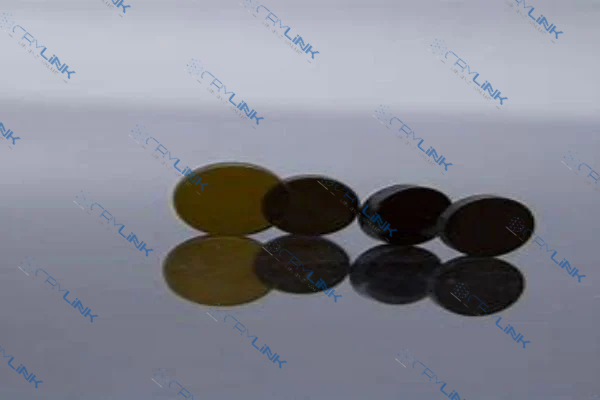
Wide Operating Temperature Range
Cr4+:YAG also has a wide operating temperature range, which means it can function effectively in various environmental conditions. This feature makes it an excellent choice for applications in different settings, from industrial processes that might generate a lot of heat to medical applications that require precise temperature control.
Unpacking the Utility of Cr4+:YAG in Passively Q-switched Lasers
The use of Cr4+:YAG in passively Q-switched lasers is not merely an arbitrary choice. Its inclusion is pivotal, enabling these lasers to function optimally and broadening their scope of application. Let’s delve deeper into the mechanics of this process and explore the various applications that result from the incorporation of Cr4+:YAG in passively Q-switched lasers.
The Mechanics of Cr4+:YAG in Passively Q-switched Lasers
In passive Q-switching, a saturable absorber, in this case, Cr4+:YAG, is used. Initially, it absorbs light from the pump source and subsequently releases it once its absorption capacity is saturated. This release of light generates high-intensity, short-duration pulses, a characteristic feature of passively Q-switched lasers.
The broad absorption band of Cr4+:YAG allows it to effectively absorb light at various wavelengths, enhancing the versatility of the laser system. Additionally, the high damage threshold and excellent thermal properties of Cr4+:YAG ensure that the system remains stable and durable, even under the high-intensity operation of Q-switching.
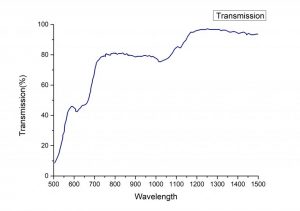
Laser-Induced Breakdown Spectroscopy (LIBS)
One significant application of passively Q-switched lasers with Cr4+:YAG is laser-induced breakdown spectroscopy (LIBS). This analytical technique uses a laser pulse to create a plasma on the surface of a sample. The emitted light from this plasma is then analyzed to determine the elemental composition of the sample.
The high-intensity, short-duration pulses produced by Cr4+:YAG Q-switched lasers are ideal for LIBS. They create a plasma that is rich in elemental emissions, thereby enabling a more accurate and detailed analysis. The durability and stability of Cr4+:YAG also ensure that the laser system can perform reliably even under continuous and rigorous use, which is often the case in LIBS analysis.
Laser Marking and Coding
Cr4+:YAG Q-switched lasers are also extensively used in laser marking and coding applications. These processes involve the use of lasers to create marks or codes on various materials, including metals, plastics, and ceramics.
The high peak power and short pulse duration of Cr YAG Q-switched lasers make them ideal for this application. They can create precise, high-contrast marks without causing significant thermal damage to the material. This precision is crucial in industries where product identification and traceability are vital, such as electronics, automotive, and medical devices.
Broadening the Spectrum of Applications
Beyond LIBS and laser marking, Cr YAG Q-switched lasers have found use in various other applications. In medicine, they are used in dermatological treatments, such as tattoo removal and skin rejuvenation. In the telecommunications industry, they are used in fiber optic communication systems. In the field of research, they are employed in studies involving nonlinear optics and quantum physics.
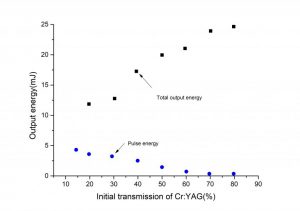
Performance Enhancement with Cr4+:YAG
The use of Cr4+:YAG in passively Q-switched lasers results in performance enhancement. It allows for the production of laser pulses with higher energy and shorter duration, leading to an increase in peak power. This amplifies the laser’s overall output, making it more efficient and versatile.
Cr4+:YAG and Its Role in Different Laser Systems
Cr4+:YAG’s application extends beyond standard lasers. It plays a significant role in microchip lasers, fiber lasers, and other advanced laser systems. Its characteristics make it a preferred choice for these systems, facilitating high pulse energy, compact size, and excellent beam quality.
Future Perspectives: Cr4+:YAG and the Laser Technology Landscape
Looking ahead, it is clear that Cr YAG will continue to play a significant role in shaping the future of laser technology. Its unique properties, combined with its versatility, make it an invaluable tool that can cater to an ever-widening array of applications. As our understanding and control of laser technologies continue to evolve, the intrinsic value of Cr YAG in these systems is set to rise exponentially.
In the medical field, we can anticipate an increased role for Cr YAG in laser treatments. Its ability to produce high-intensity, short-duration pulses makes it an ideal choice for precision procedures, from laser eye surgery to cancer treatments. The ongoing research into bio-compatible materials may also reveal new avenues for Cr4+:YAG, with possibilities of novel treatments and therapies.
Within industrial applications, Cr4+:YAG’s contribution is also predicted to grow. The demand for high-precision, efficient, and reliable laser systems in industries such as manufacturing, telecommunications, and energy is continually increasing. With its high damage threshold, broad absorption band, and excellent thermal properties, Cr YAG is well-positioned to meet these demands, driving innovation and efficiency.
In the realm of scientific research, Cr4+:YAG is expected to continue to be an essential component in various studies, such as those involving nonlinear optics, quantum computing, and photonics. The high-intensity pulses produced by Cr4+:YAG Q-switched lasers can lead to breakthroughs in these fields, pushing the boundaries of our understanding of light and matter.
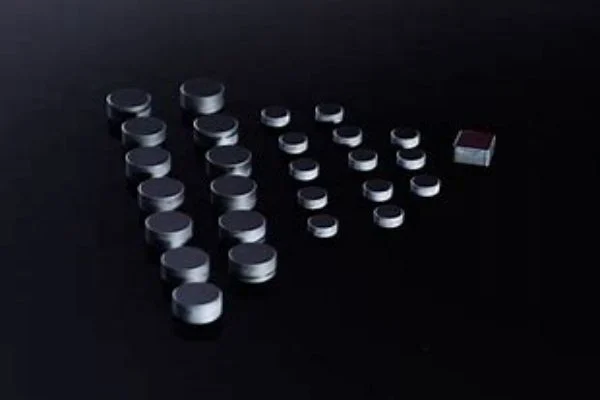
Conclusion
In conclusion, Cr4+:YAG plays a fundamental role in passively Q-switched lasers, significantly enhancing their performance. Its excellent properties and broad utility contribute to its growing popularity in the field of laser technology. As the landscape of laser technology continues to evolve, the importance of Cr4+:YAG is likely to only increase.
FAQs
- 1. What is Cr4+:YAG?
Cr4+:YAG is a synthetic crystal characterizedby chromium doping into a yttrium aluminum garnet matrix. It boasts high thermal conductivity, significant mechanical strength, and excellent optical properties. - 2. Why is Cr4+:YAG used in passively Q-switched lasers?
Cr4+:YAG acts as a saturable absorber in passively Q-switched lasers, facilitating the production of high-intensity, short-duration pulses. Its excellent thermal and optical properties make it an ideal choice for this role. - 3. How does Cr4+:YAG enhance laser performance?
Cr4+:YAG enables the production of laser pulses with higher energy and shorter duration, resulting in increased peak power. This enhances the overall output and efficiency of the laser. - 4. What are some applications of passively Q-switched lasers using Cr4+:YAG?
These lasers have a range of applications, including laser-induced breakdown spectroscopy (LIBS), laser marking and coding, and various medical and industrial uses. - 5. What is the future of Cr4+:YAG in laser technology?
As research advances, the potential applications and benefits of Cr4+:YAG in laser technology are likely to expand. It is set to play a significant role in the evolution of laser technology, from medical applications to industrial usage.

Frank
Frank graduated from the University of Shanghai for Science and Technology, majoring in optics. As a technical engineer at Crylink Company, he deeply understands crystal materials and laser components.
Related Video(s) with this Article
Related Product(s) with this Article
Related Application(s) with this Article

